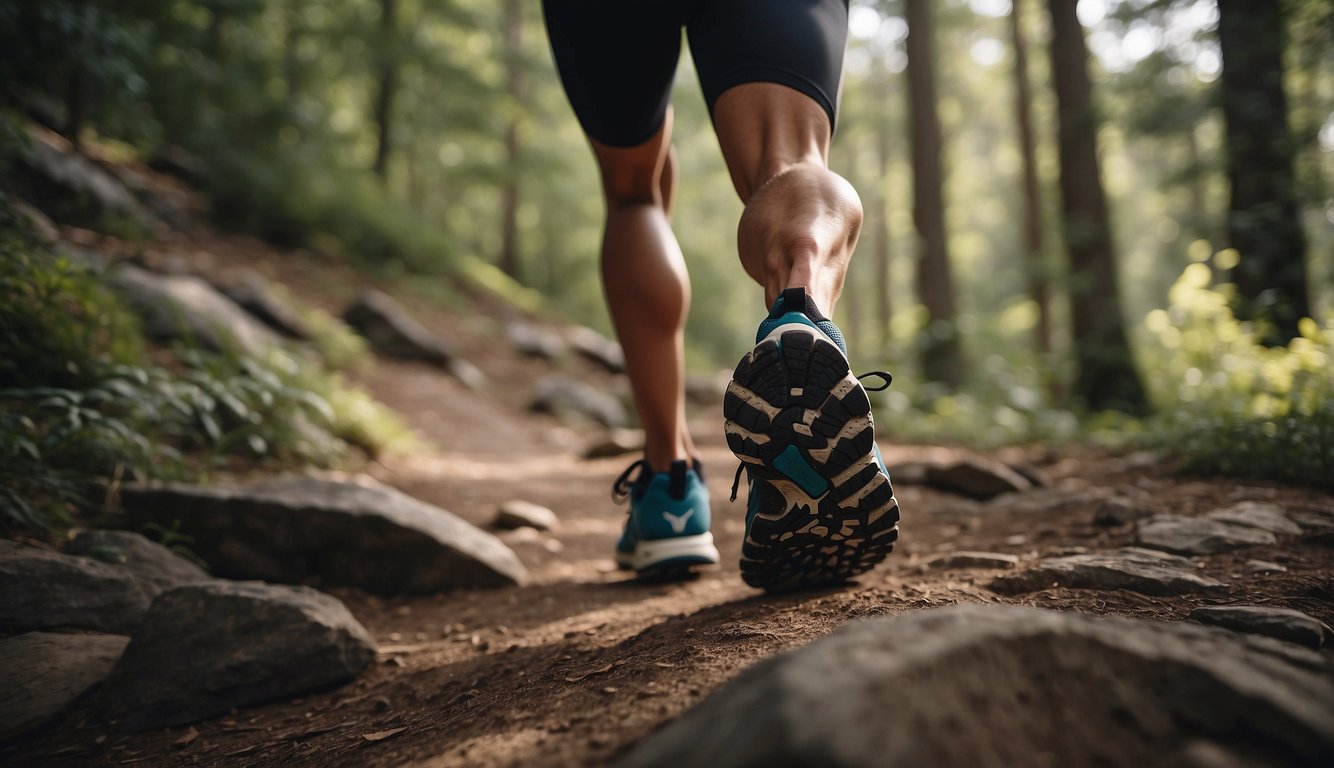If you’re looking for a way to improve your trail running technique, you’re not alone. Trail running is a popular form of exercise for those who love to explore the great outdoors and challenge themselves physically. However, it’s important to have proper technique to avoid injury and get the most out of your runs.

As a trail runner myself, I’ve learned the hard way that technique is key. Without it, you can easily slip, trip, or take a wrong step and end up with a sprained ankle or worse. But with the right technique, you can efficiently navigate the trails and enjoy the scenery without worrying about injury. In this article, I’ll share some tips and tricks that have helped me improve my own technique and become a more efficient trail runner.
Mastering Trail Running Basics
Understanding Trail Terrain and Conditions
Before hitting the trails, it’s important to understand the terrain and conditions you’ll be running on. Trails can vary in difficulty, from smooth and flat to technical and rocky. It’s important to take note of the elevation gain and loss, as this can affect your pace and effort level. Be sure to check a map of the trail beforehand and familiarize yourself with the route.
Essential Gear and Equipment
Having the right gear and equipment is crucial for a successful trail run. Trail running shoes with good traction are a must, as they provide the necessary grip for technical terrain and obstacles. Hydration is also important, so be sure to bring along a water bottle or hydration pack. Sunglasses, sunscreen, and bug spray are also essential for protection from the sun and insects.
Trail Running Technique Fundamentals
Proper trail running technique is key to efficient and injury-free running. When running on technical terrain, it’s important to keep your eyes on the trail and use your arms for balance. Shorter strides and a forward lean can help maintain proper form and prevent injury. It’s also important to keep your head up and maintain a relaxed hip flexor to improve cadence and stride rate. Building confidence on the trails takes time, so don’t be afraid to start slow and gradually increase your pace and distance.
By mastering the basics of trail running, you can improve your technique and efficiency on the trails. With the right preparation, gear, and technique, you can tackle any terrain and enjoy the beauty of nature while getting a great workout.
Advanced Techniques and Training Strategies
Optimizing Uphill and Downhill Running
When it comes to running uphill, it’s important to maintain a steady pace and shorten your stride to conserve energy. I find that taking smaller steps and keeping my body upright helps me maintain my balance and avoid tripping. On the other hand, when running downhill, I like to lean forward slightly and take longer strides to gain momentum. It’s important to stay in control and not let gravity take over completely, as this can lead to injuries.
Building Strength and Endurance
Strength training is essential for improving your trail running performance. Resistance exercises such as squats, lunges, and planks help build the muscles and tendons necessary for tackling tough terrain. I also like to incorporate hill repeats and interval training into my workouts to improve my endurance and speed. However, it’s important to gradually increase your mileage and intensity to avoid overuse injuries.
Mental and Physical Preparation
Trail running requires both physical and mental toughness. I find that visualizing success and setting achievable goals helps me stay motivated during long runs. It’s also important to stay hydrated and fuel your body with the right nutrients before, during, and after your run. I like to carry a hydration pack with me and snack on energy gels or bars as needed. Additionally, taking time to stretch and recover after a run can help prevent injuries and improve overall performance.
Trail Etiquette and Safety
Trail running is a great way to explore the outdoors, but it’s important to respect other hikers and runners on the trail. I always yield to uphill runners and hikers and try to stay on designated trails to minimize my impact on the environment. It’s also important to be aware of your surroundings and carry a whistle or other safety equipment in case of emergencies. Finally, I always let someone know my planned route and estimated return time before heading out on a run.
In conclusion, incorporating these advanced techniques and training strategies into your trail running routine can help improve your performance, prevent injuries, and enhance your overall experience on the trail.

